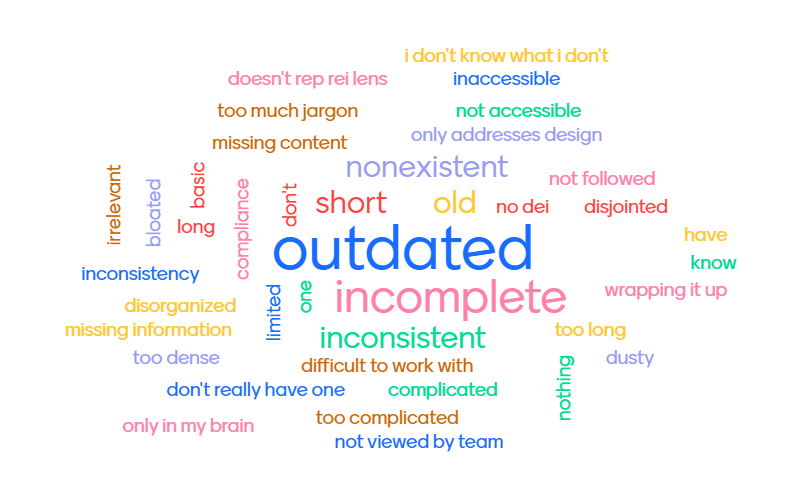
We recently asked more than 50 nonprofit communicators about their top problems with their style guide or brand book.
The first answer was that the style guide was outdated.
The second answer was that the style guide was incomplete.
The rest of the answers are in the graphic above, which includes the style guide being inconsistent, too complicated, and not followed.
Here are three recommendations to get your nonprofit style guide back on track.
Pick a Default Style Guide
First, you should choose a default style guide so even if your style guide is outdated, you have one that is more frequently updated to follow.
CMOS Shop Talk is a great resource that often covers both Chicago and AP.
You might also like:
Pick a Specialized Style Guide
Next, you might want to use another specialized style guide that better matches your specific work.
Specialty Guides (Many Are Written by Nonprofit Advocates, Often for Journalists)
Our recommendation: Cite these as sources for decisions in your own style guide, so that you can review and update language choices as these guides update their recommendations.
APA General Principles for Reducing Bias
National Center on Disability and Journalism Style Guide
Global Press Journal Style Guide
International Council on Active Aging Style Guide
Mailchimp’s Guide to Writing for Accessibility
Identify the Words or Phrases That Still Need Conversation
Your default and specialized style guides will help you start the process of updating your own guide.
Of course, you still have work to do specifically related to how you talk about your organization’s program and services. This includes how you talk about the people you serve or otherwise interact with.
We know that nonprofits are currently debating many of these phrases.
We suggest picking just a few to start with. Do your research on what the various style guides say and how others in the sector are talking about the same things. Then lead those conversations within your nonprofit about the right choices as you update your style guide.






